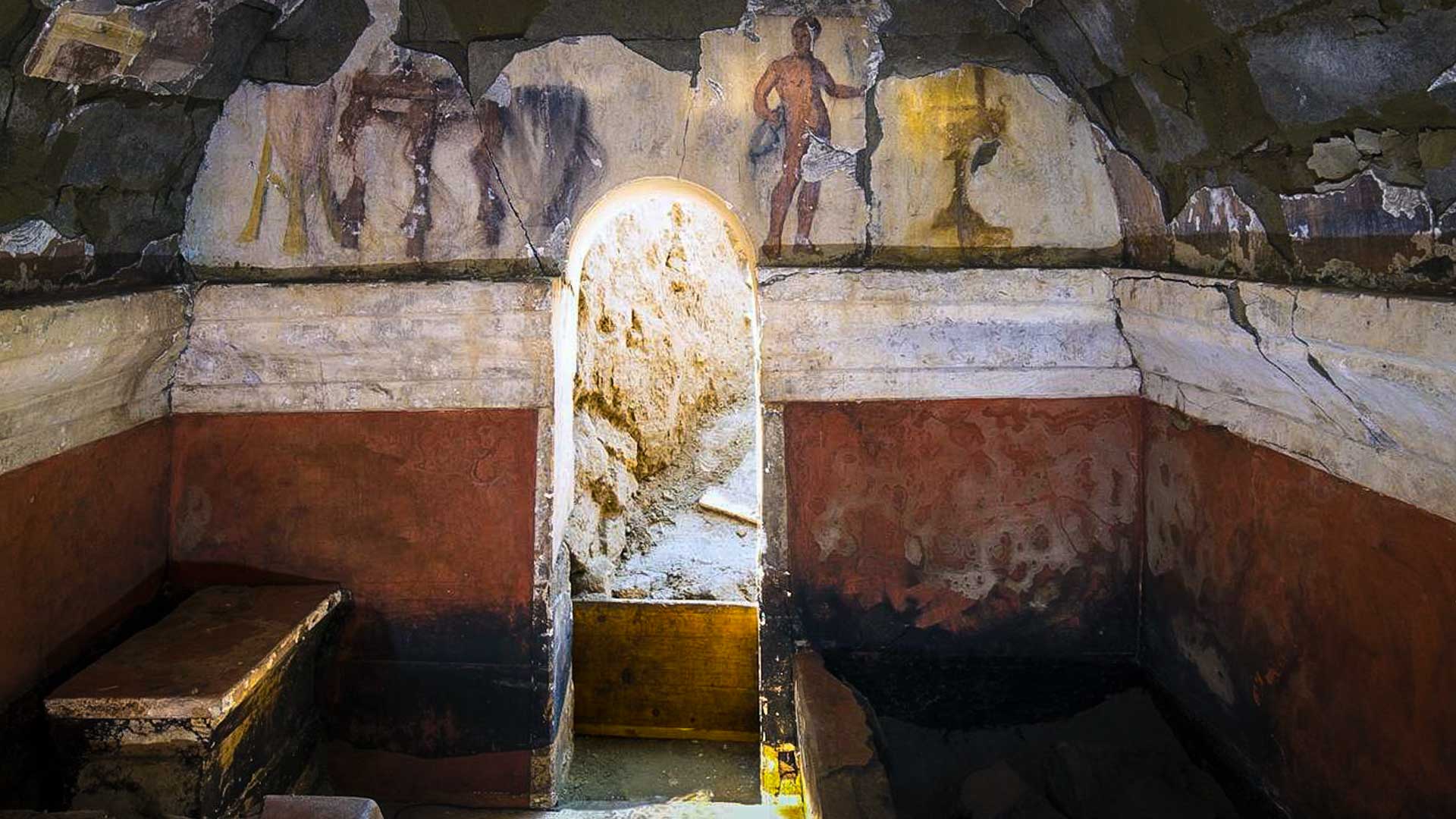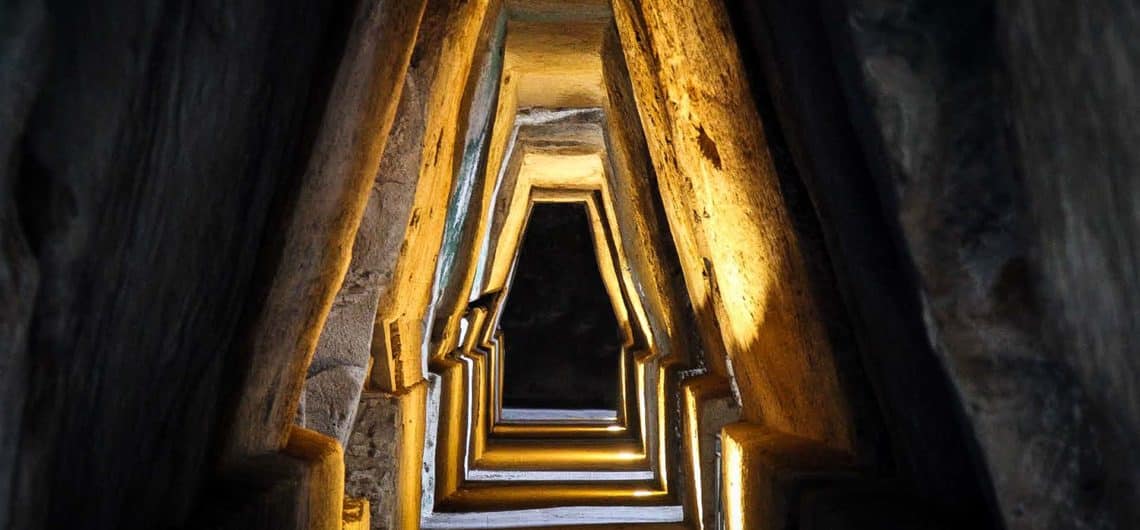Cumae, Discovered An Ancient Tomb Featuring A Naked Servant
Cumae, the oldest Ancient Greek settlement in the western world, is undoubtedly one of the most beautiful and intriguing places for archaeologists. Founded in the second half of the 8th century BC by Greeks from Euboea, later sacked by the Oscans and then incorporated into the Roman Empire, this ancient city and its precious and amazing findings have indeed casted a light on crucial aspects of the Greek culture and on the ancient civilization of Ancient Campania.
In recent years archaeologists have focused the excavations on an area where a Greek sanctuary, roads and a necropolis were found. Since 2001, they have discovered and unearthed hundreds of ancient sepulchres and a series of vaulted burial chambers all painted with red or white colours.
But in June 2018 some French researchers discovered a 2,200-year-old tomb with superb example of figurative painting. The quality and colourfulness of this extraordinary fresco indicates that the people buried within the burial chamber had a high social status. The paintings shows a naked servant bearing a jug of wine and a vase, a typical example of erotic art, in vogue both in Pompeii and Herculaneum, while the rest of the painting with the banquet’s guests depicted on the tomb’s remaining walls, has sadly faded away.

Unfortunately the tomb, with three beds that presumably once contained three bodies, has been raided several times in the 19th century. However, the quality of the surviving fresco is exceptional and the scene painted on the walls of the tomb is “unfashionable” for its time, offering an opportunity to trace artistic activity over time and to reconstruct the artistic evolution of the parietal decorations in Cumae.
Priscilla Munzi, CNRS researcher at the Jean Bérard Centertold has confirmed that “The theme of the banquet (preparation ceremony) is widespread in the oldest tombs. But this is the first tomb of 2nd century BC in Campania that documents this motif. She continues “this is the first tomb with figured paintings of the second century B.C. that we found in Cumae […] while the other tombs with paintings found in Cumae date back to the end of the fourth century – early third century B.C.”
The excavations were indeed carried out with financial support from the French Ministry of Europe and Foreign Affairs, the French School of Rome and the Collège de France’s foundation. The research was done in collaboration with the Phlegraean Fields Archaeological Site., directed by Paolo Giulierini.
The extraordinary fresco has now been removed by archaeologists from the site along with its fragments on the ground in order to preserve it and re-assemble the décor like a puzzle. Its discovery represents primarily a source of great scientific and historical progress and it will lately enrich the Archaeological Site of Cumae and its museum.
For further information please visit the official website of the Archaeological Site of Cumae

Comments